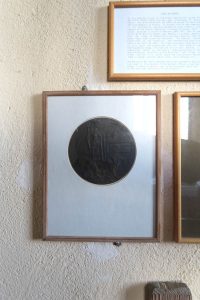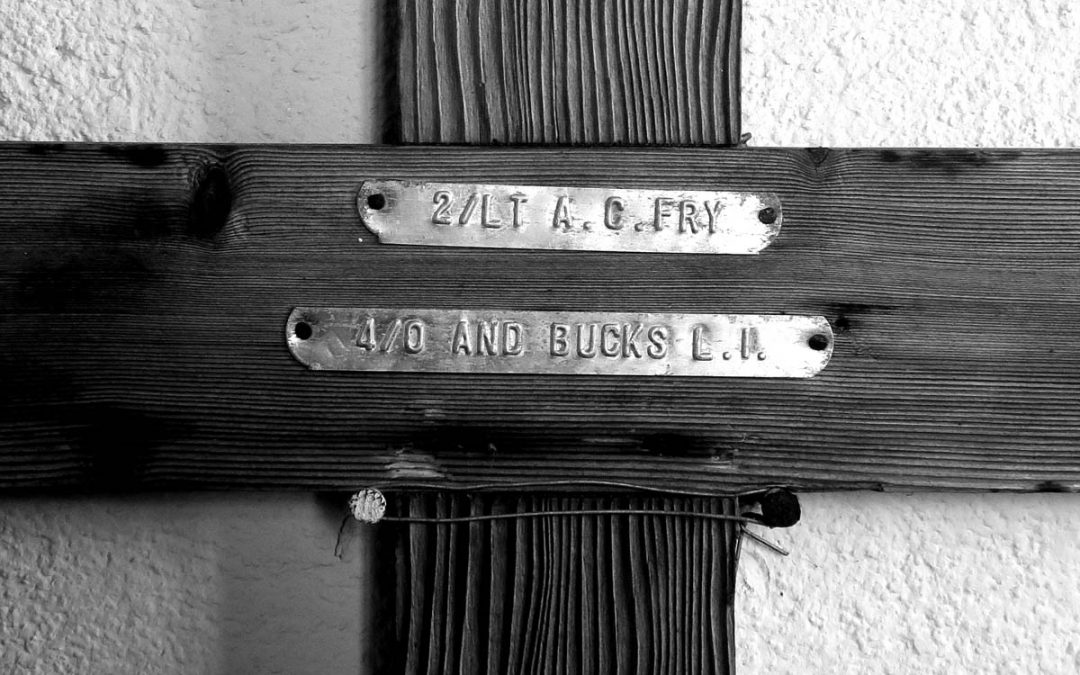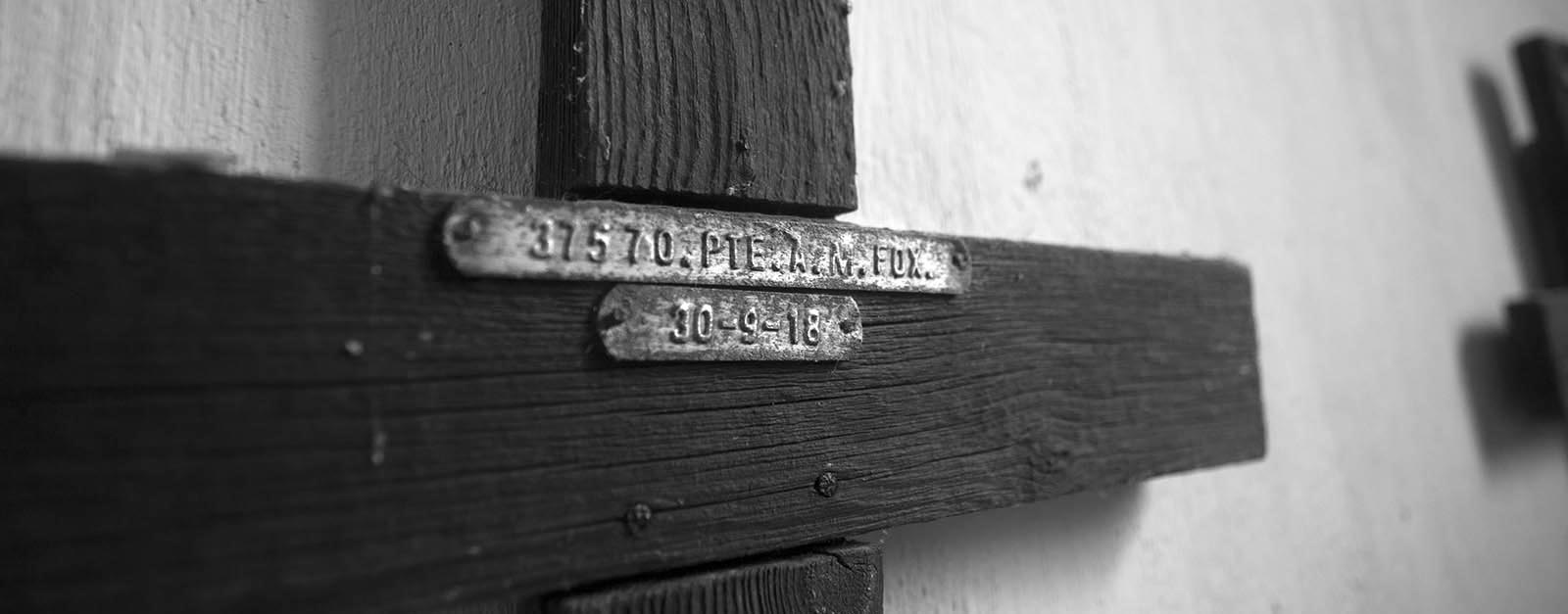2/Lt A.C. FRY
Location: St Ervan Church, St Ervan, Cornwall, PL27 7TA
Details on cross:
IWGC
2/Lt A.C. FRY
4/O AND BUCKS L.I.
Text type (e.g. hand-written, GRU tags, carved): GRU tags
Cross dimensions (millimetres please)
Shaft Height: 1150
Cross beam width:410
Width of wood:70
Thickness or depth: 25
Other information
Mounting to wall: Hung on two nails
Detailing: Chamfered edges to shaft and cross piece
Evidence of use in field (earth marking, cracking, staining, shrinkage): Some damage to base of shaft.
Surface insertion depth (into ground if apparent):
Finish (varnish, paint, oiled, unfinished etc): Unfinished
Condition (cracked, paint peeling, woodwork, damage etc): Fair
Notes and observations:
 Arthur Charles Fry was seriously wounded by shellfire at Ablaincourt on February 28th 1917 and died of his wounds later that day or early the next. He had been in France for just six weeks. He is buried in Bray Military Cemetery near Albert in France.
Arthur Charles Fry was seriously wounded by shellfire at Ablaincourt on February 28th 1917 and died of his wounds later that day or early the next. He had been in France for just six weeks. He is buried in Bray Military Cemetery near Albert in France.
Fry’s cross, and probably his Dead Man’s Penny as well, were claimed after the war by the then Rector of St Ervan, Canon Wilfrid Johnson, a Prebendary of Bodmin. The 1911 census records Fry as living with Wilfrid Johnson in Derby while he was at school there. Johnson is described as his ward, although why he should have a ward when both his parents were still alive and living in Kent is not clear. It seems that Fry and Johnson remained friends up until the time of Fry’s death.
It seems also that John Betjeman visited St Ervan and met Johnson, a meeting recorded by Betjeman in Summoned by Bells::
DEAR lanes of Cornwall! With a one-inch map,
A bicycle and well-worn “Little Guide”,
Those were the years I used to ride for miles
To far-off churches. One of them that year
So worked on me that, if my life was changed,
I owe it to St. Ervan and his priest
In their small hollow deep in sycamores.
The time was tea-time, calm free-wheeling time,
When from slashed tree-tops in the combe below
I heard a bell-note floating to the sun;
It gave significance to lichened stone
And large red admirals with outspread wings
Basking on buddleia. So, casting down
In the cool shade of interlacing boughs,
I found St. Ervan’s partly ruined church.
Its bearded Rector, holding in one hand
A gong-stick, in the other hand a book,
Struck, while he read, a heavy-sounding bell,
Hung from an elm bough by the churchyard gate.
“Better come in. It’s time for Evensong.”
There wasn’t much to see, there wasn’t much
The “Little Guide” could say about the church.
Holy and small and heavily restored,
It held me for the length of Evensong,
Said rapidly among discoloured walls,
Impatient of my diffident response.
“Better come in and have a cup of tea.”
The Rectory was large, uncarpeted;
Books and oil-lamps and papers were about;
The study’s pale green walls were mapped with damp;
The pitch-pine doors and window-frames were cracked;
Loose noisy tiles along the passages
Led to a waste of barely furnished rooms:
Clearly the Rector lived here all alone.
He talked of poetry and Cornish saints;
He kept an apiary and a cow;
He asked me which church service I liked best —
I told him Evensong… “And I suppose
You think religion’s mostly singing hymns
And feeling warm and comfortable inside?”
And he was right: most certainly I did.
“Borrow this book and come to tea again.”
With Arthur Machen’s “Secret Glory” stuffed
Into my blazer pocket, up the hill
On to St. Merryn, down to Padstow Quay
In time for the last ferry back to Rock,
I bicycled — and found Trebetherick
A worldly contrast with my afternoon.
Betjeman spent a great deal of time in Cornwall, particularly round the Newquay area, and is buried in St Enodoc’s churchyard, only about ten miles from St Ervan by bike and ferry.
There is a well-researched story of his life on the Headington website in the First World War in Headington and Marston section http://www.headington.org.uk/history/war/standrew/fry_arthur.html
Thanks to Mike O’Connor, Lay Reader at St Ervan, for the link to Prebendary Johnson and Betjeman, and much other fascinating information about the church as well.
Survey and photographs by Andrew Macdonald
Date of Survey 13/04/17



